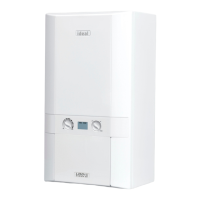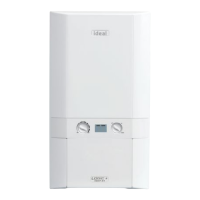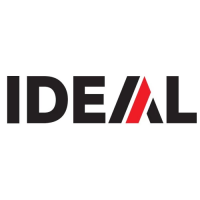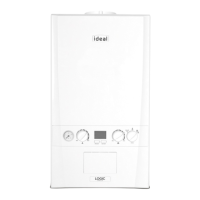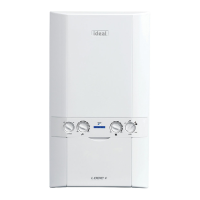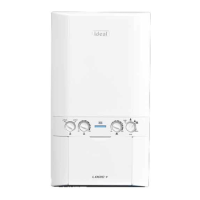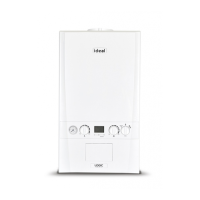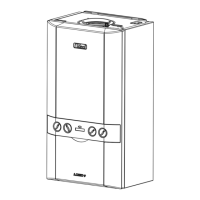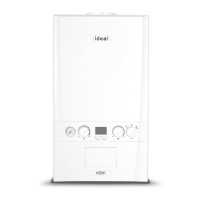41
GENERAL CHECKS
CENTRAL HEATING (CH) MODE
1. Ensure that the CH external controls are
calling for heat.
The display should read:
2. Check the boiler gas rate when the
boiler is at full output.
Check at the gas meter, with no other
appliance in use.
Refer to Table 2 for gas rate.
3. Set the central heating external
controls to OFF. The burner should go
off and the pump continue to run for
two minutes
The display should read:
4. Check the correct operation of all
system controls. Operate each control
separately and check that the main
burner responds.
Make the following checks for correct operation:
WATER CIRCULATION SYSTEM
1. With the system COLD, check that the initial pressure is correct to the system
design requirements.
For pre-pressurised systems, this should be 1.0 bar.
2.
With the system HOT, examine all water connections for soundness. The system
pressure will increase with temperature rise but should not exceed 2.5 bar.
3. With the system still hot, turn off the gas, water and electricity supplies to the
boiler and drain down to complete the ushing process.
Note: A ushing solution should be used during the ushing procedure. Flushing
solutions: Fernox Superoc, Sentinel X300 (new systems) or X400 (existing
systems). Refer to Frame 5.
4. Rell and vent the system, add inhibitor (see Frame 5), clear all air locks and
again check for water soundness.
5. Reset the system initial pressure to the design requirement.
6. Balance the system. Refer to Frame 3.
7. Check the condensate drain for leaks and check that it is discharging correctly.
8. Finally, set the controls to the User’s requirements.
42
RESTART PROCEDURE
To restart boiler, turn the mode knob (B) to restart position and immediately turn knob back to required setting. The boiler will
repeat the ignition sequence if a heat demand is present.
Legend
A. Central Heating Temperature Knob
B. Mode Knob
C. Boiler Status
D. Burner ‘on’ Indicator
E. Central Heating Economy Setting
43
HANDING OVER
6. Explain and demonstrate the function of time and
temperature controls, radiator valves etc., for the economic
use of the system.
7. If a timer is tted draw attention to the timer Users
Instructions and hand them to the householder.
8. Explain Boiler restart procedure.
9.
After installation and commissioning please complete the
Benchmark Commissioning Checklist before handover to the
customer. For IE, its is necessary to complete a “Declaration of
Conformity” to indicate compliance to I.S. 813:2002.
IMPORTANT
10. A comprehensive service should be carried out ANNUALLY.
Stress the importance of regular servicing by a Gas Safe
Registered Engineer. In IE servicing work must be carried out
by a Registered Gas Installer (RGII).
11. Inform the householder of the guarantee/registration found
within the envelope pack and the requirement to register it to
receive the full benet of the warranty.
1. Hand the User Instructions to the householder and
explain his/her responsibilities under the relevant national
regulations.
2. Explain and demonstrate the lighting and shutting down
procedures.
3. The operation of the boiler and the use and adjustment of all
system controls should be fully explained to the householder,
to ensure the greatest possible fuel economy consistent with
the household requirements of both heating and hot water
consumption.
Advise the User of the precautions necessary to prevent
damage to the system and to the building, in the event of the
system remaining inoperative during frosty conditions.
4. Explain the function and the use of the boiler heating
controls.
5. Explain the function of the boiler fault mode.
Emphasise that if a fault is indicated refer to “Fault Codes” in
the User Guide.
After completing the installation and commissioning of the system the installer should hand over to householder by the
following actions:
WATER TEMPERATURES
Temperatures can be selected using the CH temp ctrl (A)
Knob Setting CH Flow Temp
o
C (
o
F)
Max 80 (176)
Min 30 (86)
INSTALLATION
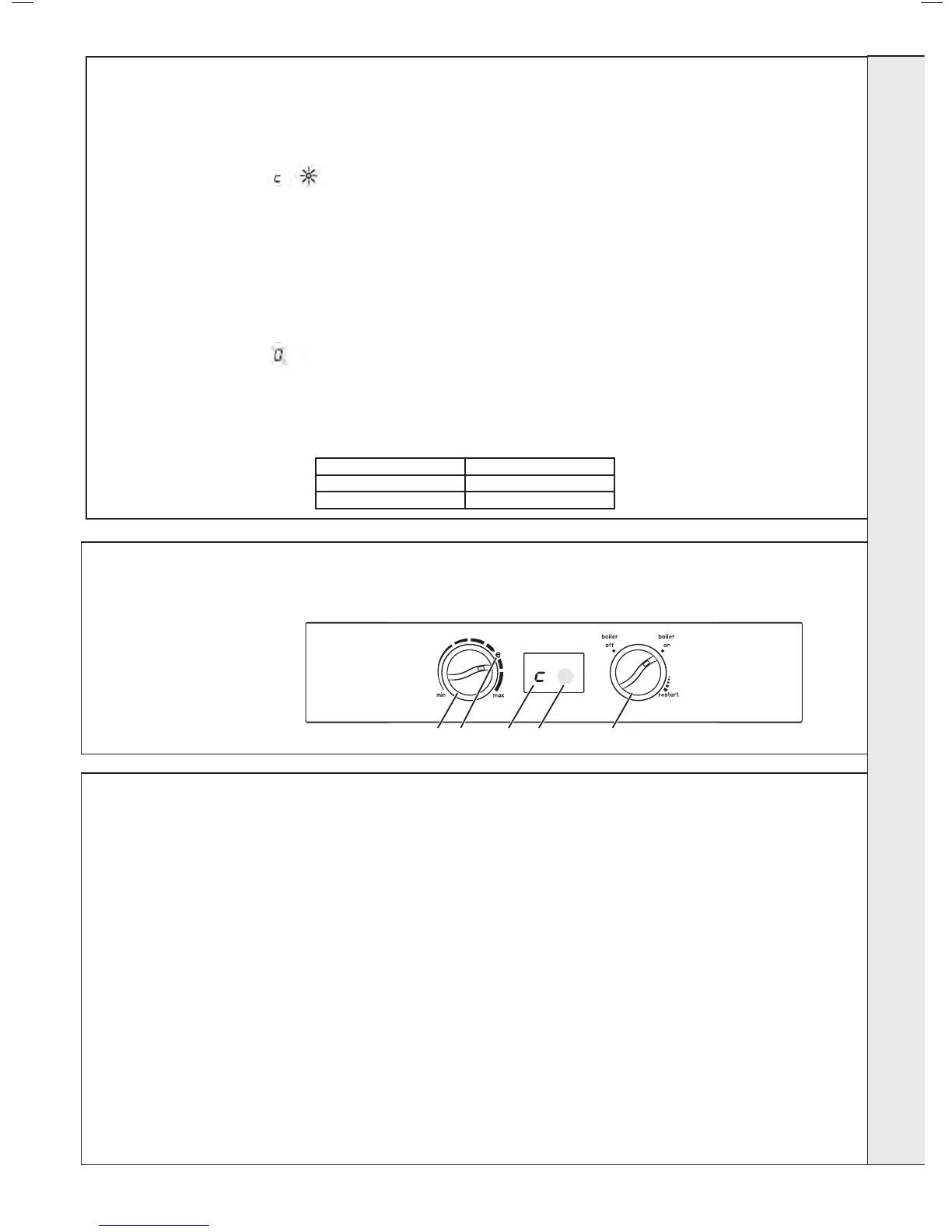